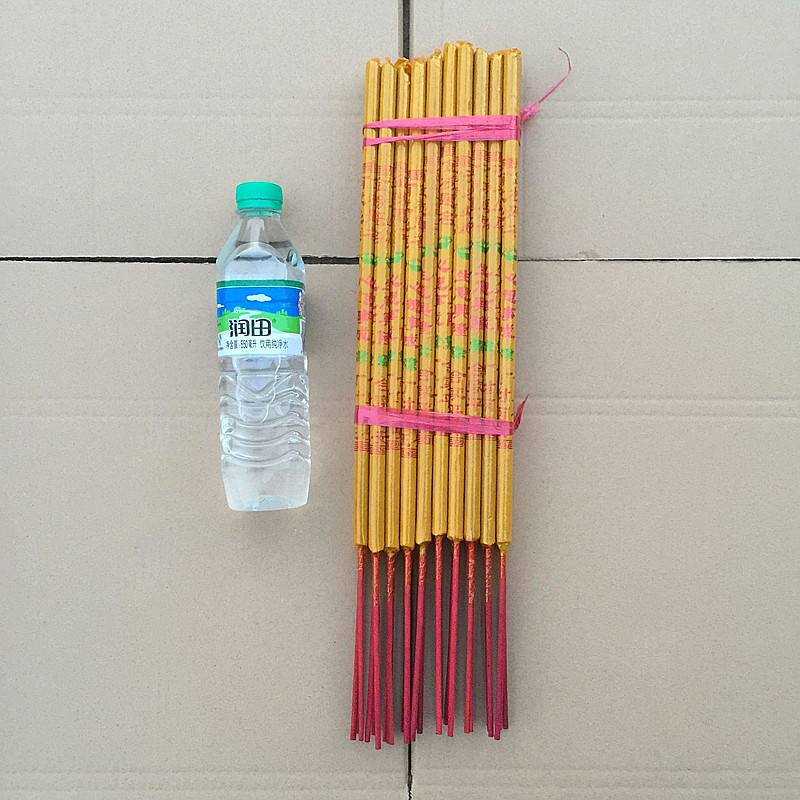Precautions for making bamboo stick incense
At present, the main methods for producing bamboo stick incense are as follows:
1. Traditional handmade fragrance pouring technique.
2. Manual powder coating and mechanical bucket making.
3. Pressure (hydraulic, pneumatic) machine strike. Using the first and second methods to produce products below four millimeters, the grain production is generally higher than the third method, and the labor intensity is highest in the first method. The bamboo stick fragrance produced by the third method only needs appropriate ingredients, and the resulting product will be more uniform, smooth, and consistent in size.

I think the following points should be noted.
1. Reasonable ingredients should be made based on the characteristics of different adhesive powders used, because different adhesive powders have different gums and functions. The same adhesive powder comes from different origins and has different viscosities from different batches. If the same ratio is used for all, problems may occur at times. For example, simple adhesion into a ball, rotten head, rotten feet, rotten meat, etc. Making incense does not necessarily mean that the stickiness of the powder is better. The ingredients should be mixed evenly. Although some masters can make each incense taste evenly based on their experience, their grasp is not good enough. This can simply cause the areas with more wood powder to melt into water, and the areas with more adhesive powder to stick together, resulting in the appearance of large, fine, and uneven shapes of the incense, making it difficult to form a smooth and even fragrance.
2. Grasp the base powder well, add meat powder, and cover the flour with the strongest adhesive force of the base powder, followed by meat powder, and cover the flour slightly weaker. If the adhesive force of the meat powder is stronger than that of the base powder, it will simply rot and become fragrant. If the adhesive force of the cover flour is not good, it will easily remove the flour.
3. Selection of bamboo heart. In traditional bamboo stick making, there is a saying of "one bamboo, two ingredients, and three skills". It is best to choose bamboo sticks that are evenly sized, without bamboo green or smudged bags. Bamboo sticks with bamboo green are not easy to powder on one side of the bamboo green, have poor adhesion, and are prone to rotting fragrance. The smudged bags are mostly soft and prone to insect infestation.
4. Control of water intake: When lowering the water tray, the entire bamboo stick and incense should be evenly drained. After the water tray is released, it should be inverted to allow the water to flow back evenly before adding powder to prevent large heads, tails, and bellies.
5. Selection of Cover Flour: Cover flour should have a sufficient fineness to make it smooth and easy to produce fragrance. If it is used to create color fragrance, light colored wood powder or bamboo powder should be selected to make the color more vibrant and bright. After distribution, it should be sieved.
Article source: Jiangmen bamboo stick fragrance manufacturerhttp://www.dongfangxl.com/
-
09-30
What are the structures of bamboo stick incense?
Bamboo stick incense, also known as string incense, stick incense, or standing incense in Taiwan, and bamboo stick incense in mainland China, is named after its use of bamboo branches, cinnamon bamboo
-
09-30
Incense Manufacturer: Craftsmanship for Making Bamboo Stick Incense
The ancients discovered that any type of spice has the effects of refreshing and calming the mind, so the history of incense burning in China has been over 3000 years, and China can be considered one
-
09-08
Fragrant powder and spice factory: production techniques for bamboo stick fragrance
Nowadays, when making bamboo stick incense, the following methods should be used first:1. Traditional craftsmanship involves hand pouring fragrance.2. Handmade powder coating and mechanical bucket mak
-
08-26
Fragrant powder and spice factory: How to distinguish the quality of bamboo stick fragrance?
We call fragrances made from natural spices "natural fragrances", fragrances with artificially synthesized spices "chemical fragrances", or perhaps "fragrance crafts". Chemical fragrance only has the
